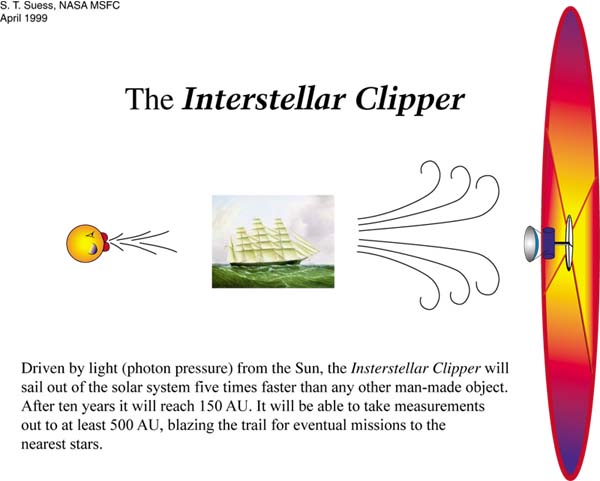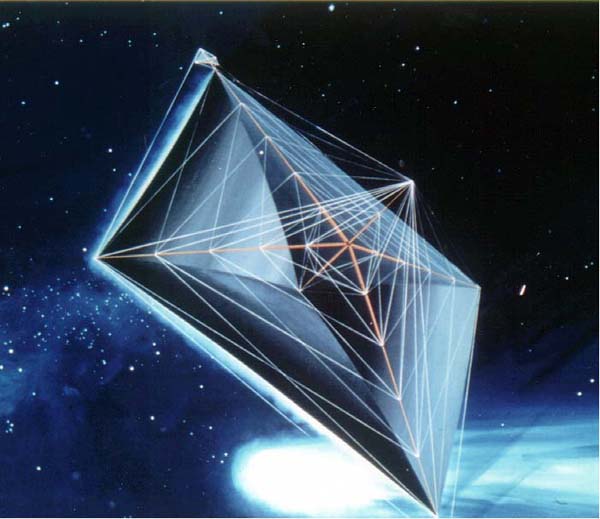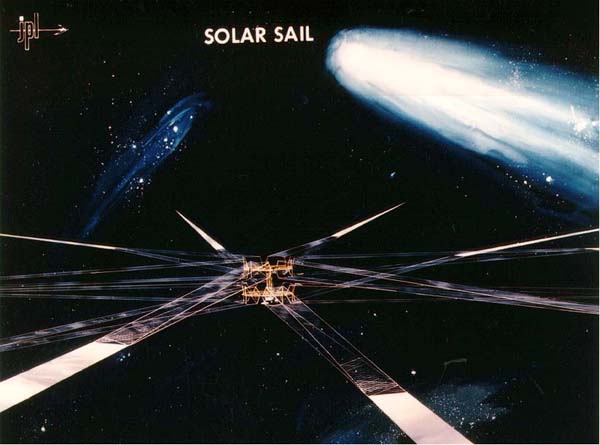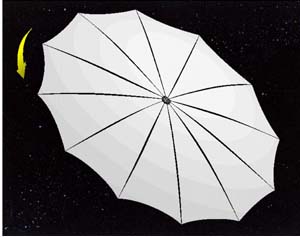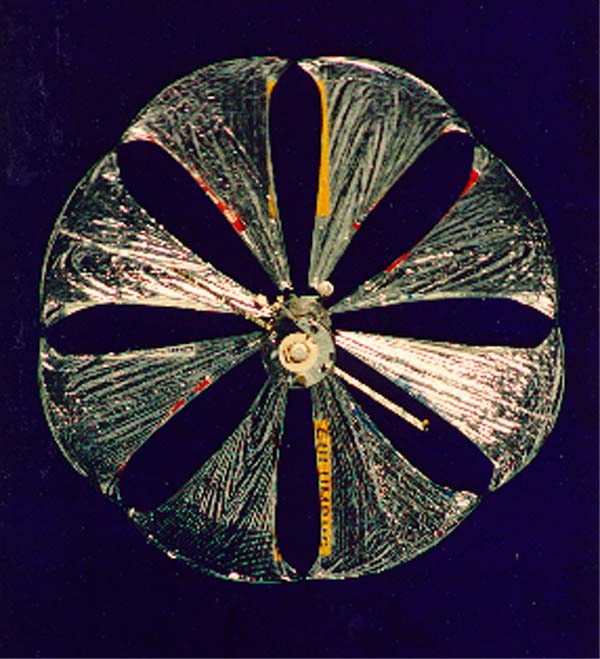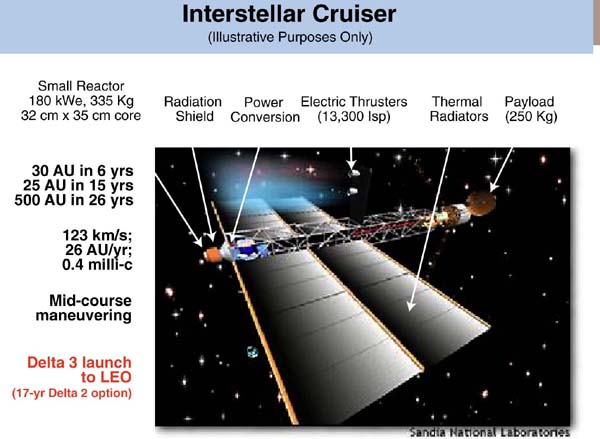There are two ideas for how the Interstellar Probe might get to 250 AU quickly enough to make the mission worth while. These are:
Further discussion:
Technology Requirements
Assume the use of solar sail propulsion Low-mass/power optimized instrumentation Light-weight, low-cost spacecraft
Measurement Strategy
Measure, in situ, the properties and composition of interstellar plasma and neutrals, low energy cosmic rays, and interstellar dust Determine the structure and dynamics of the heliosphere with in situ measurements and global imaging Map the infrared emission of the zodiacal dust cloud, measure in situ the distribution of interplanetary dust, and determine the radial distribution of small Kuiper Belt objects
In the view discussed in the Introduction, solar wind flows outward to the termination shock, surrounded at somewhat greater distance by the heliopause. The bubble of solar wind shields the inner heliosphere from the plasma, energetic particles, dust, and fields of the interstellar medium; to observe these directly it will be necessary to get outside the heliopause. Several recent estimates place the distance to the termination shock at ~80 to 90 AU, with the heliopause at ~120 to 150 AU.Mission Description
Send a spacecraft to at least 200 AU in 15 years or less, using solar-sail propulsion. Deploy the sail shortly after launch and use it to swing in to ~0.25 AU, where photon pressure can accelerate the spacecraft towards the upwind direction After jettisoning the sail at ~10 AU, coast to >200 AU, exploring the Kuiper Belt, the boundaries of the heliosphere, and the properties of the nearby interstellar medium. Further Explanation
The Interstellar Probe Mission would be designed to cross the solar wind termination shock and heliopause and make a significant penetration into nearby interstellar space in the direction the heliosphere is moving through the local interstellar medium (LISM). The principal scientific objectives of the mission would be to (1) Explore the nature of the interstellar medium and its implications for the origin and evolution of matter in our Galaxy and the Universe; (2) Explore the influence of the interstellar medium on the solar system, its dynamics, and its evolution; (3) Explore the impact of the solar system on the interstellar medium as an example of the interaction of a stellar system with its environment, and (4) Explore the outer solar system in search of clues to its origin, and to the nature of other planetary systems. I comprehensive set of observing objectives has been prepared which meets these general scientific objective.
To achieve these broad, interdisciplinary objectives, the strawman scientific payload includes an advanced set of miniaturized, low-power instruments specifically designed to make comprehensive, in situ studies of the plasma, energetic particles, fields, and dust in the outer heliosphere and nearby interstellar medium. Included would be studies of solar wind, neutral species, and pickup ions in the interplanetary medium, in situ studies of particle acceleration at the termination shock, which is a model for other astrophysical shocks, studies of the penetration of interstellar gas and dust into the heliosphere, and exploration of the hydrogen wall apparently responsible for low frequency radio emissions. Infrared and in situ studies of the zodiacal dust cloud would have important implications for the evolution of the solar system, for studies of planets around other stars, and for studies of the cosmic infrared background radiation. The large-scale structure and dynamics of the heliosphere would be studied in situ and with energetic-neutral-particle imaging. The interaction of our heliosphere with the interstellar medium is a model for similar interactions occurring around other stellar systems.
Once beyond the heliopause Interstellar Probe would make direct measurements of properties of interstellar gas, dust, and the interstellar magnetic field, and of low-energy cosmic rays unaffected by the processes of “solar modulation” that shield the inner heliosphere. Direct measurements would be made of the composition of interstellar dust, and of the elemental and isotopic composition of the ionized and neutral components of the interstellar gas and low-energy particle components, including key isotopes such as 2H, 3He, 13C, and heavier species. The possibility of identifying organic matter in the outer solar system and interstellar medium is under investigation.
To accomplish its objectives Interstellar Probe should acquire data out to a distance of at least 200 AU, with a goal of continuing on to ~400 AU. Spacecraft velocities of ~10 to 20 AU/year (3 to 6 times that of Voyager 1) can be achieved if solar sail propulsion is developed, with potential benefits for many other missions. Interstellar Probe can serve as the first step in a more ambitious program to explore the outer solar system and interstellar space.
Propulsion Technologies - Solar Sails
The Solar Sail Mission might be called:
